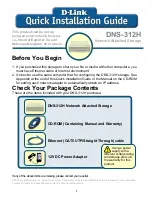
Unlike traditional backup and recovery, ProtectPoint does not rely on a separate
process to discover the backup data and additional actions to move that data to
backup storage. Instead of using dedicated hardware and network resources,
ProtectPoint uses existing application and storage capabilities to create point-in-time
copies of large data sets. The copies are transported across a storage area network
(SAN) to Data Domain systems to protect the copies while providing deduplication to
maximize storage efficiency.
ProtectPoint minimizes the time required to protect large data sets, and allows
backups to fit into the smallest of backup windows to meet demanding RTO or RPO
requirements.
Basic backup workflow
In the basic backup workflow, data is transferred from the primary storage array to
the Data Domain system. ProtectPoint manages the data flow. The actual movement
of the data is done by SnapVX.
The ProtectPoint solution enables the Application Administrator to take the snapshot
on the primary storage array with minimal disruption to the application.
Note
The Application Administrator must ensure that the application is in an appropriate
state before initiating the backup operation. This ensures that the copy or backup is
application-consistent.
In a typical operation:
l
The Application Administrator uses ProtectPoint to create a snapshot.
l
ProtectPoint moves the data to the Data Domain system.
l
The primary storage array keeps track of the data that has changed since the last
update to the Data Domain system, and only copies the changed data.
l
Once all the data captured in the snapshot has been sent to the Data Domain
system, the Application Administrator can create a static-image of the data that
reflects the application-consistent copy initially created on the primary storage
array.
This static-image and its metadata are managed separately from the snapshot on the
primary storage array, and can used as the source for additional copies of the backup.
Static-images that are complete with metadata are called backup images.
ProtectPoint creates one backup image for every protected LUN. Backup images can
be combined into backup sets that represent an entire application point-in-time
backup.
The following image illustrates the basic backup workflow.
Open systems features
Basic backup workflow
63
Содержание VMAX 100K
Страница 1: ...EMC VMAX3 Family Product Guide VMAX 100K VMAX 200K VMAX 400K with HYPERMAX OS REVISION 6 5 ...
Страница 20: ...Preface 20 Product Guide VMAX 100K VMAX 200K VMAX 400K with HYPERMAX OS ...
Страница 46: ...VMAX3 with HYPERMAX OS 46 Product Guide VMAX 100K VMAX 200K VMAX 400K with HYPERMAX OS ...
Страница 72: ...Open systems features 72 Product Guide VMAX 100K VMAX 200K VMAX 400K with HYPERMAX OS ...
Страница 82: ...Provisioning 82 Product Guide VMAX 100K VMAX 200K VMAX 400K with HYPERMAX OS ...
Страница 100: ...Native local replication with TimeFinder 100 Product Guide VMAX 100K VMAX 200K VMAX 400K with HYPERMAX OS ...
Страница 158: ...Remote replication solutions 158 Product Guide VMAX 100K VMAX 200K VMAX 400K with HYPERMAX OS ...
Страница 186: ...Mainframe Error Reporting 186 Product Guide VMAX 100K VMAX 200K VMAX 400K with HYPERMAX OS ...
Страница 200: ...Licensing 200 Product Guide VMAX 100K VMAX 200K VMAX 400K with HYPERMAX OS ...
















































